In today's fast-paced world, efficient reservation management is crucial for businesses across industries. 🚀
Reservation reports play a vital role in optimizing resources and ensuring customer satisfaction. With the rising number of inquiries about reservation reports, we've compiled a concise guide to address the most common questions. ❔
This article provides practical examples and insights into their usage, enabling you to make informed decisions. Let's explore the power of reservation reports in transforming your reservation management processes. 🌟
Introduction to the Reservation Report 📑
Located in the middle of your Dashboard, the Reservation report is a goldmine of information in your system. From checking today’s arrival to overall monthly numbers, this versatile report can seem overwhelming, so I am here to help you with a few principles that will enable your new favorite report in Mews.
Similar to other reports in Mews, you can find the filters on the right side of the screen. To understand most of the report, I will highlight three filters.
- Mode
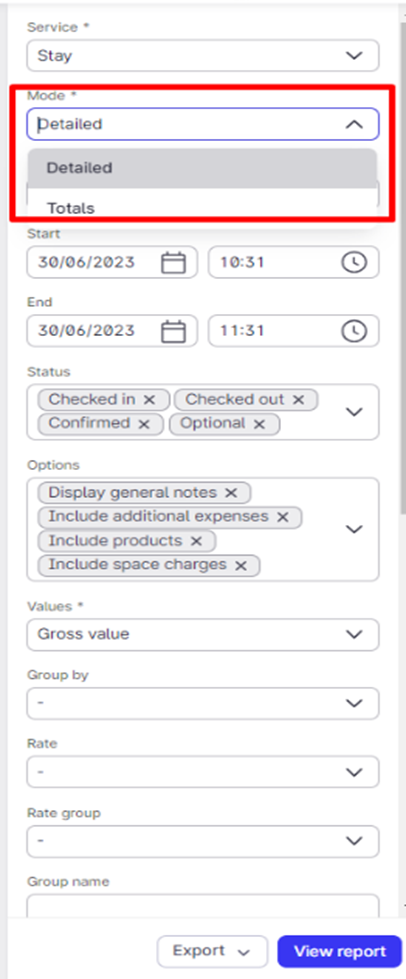
Select the mode in which you would like to view the report. The two modes display different data columns.
Detailed: View individual bookings including all details for a more in-depth analysis.
Totals: Summarize information to analyze report data more quickly and generally.
In practice, for monthly reporting (more data focused), Totals mode is more adequate as you will have all numbers, and not all the specifics (name, reservation number…). However, if you want to know the arrivals for a specific date, I would recommend the Detailed mode.
Totals mode will provide you the number of nights and reservations, but also the Average rate (nightly) and total amounts for the period of time provided. (Tips: better for longer period of times)
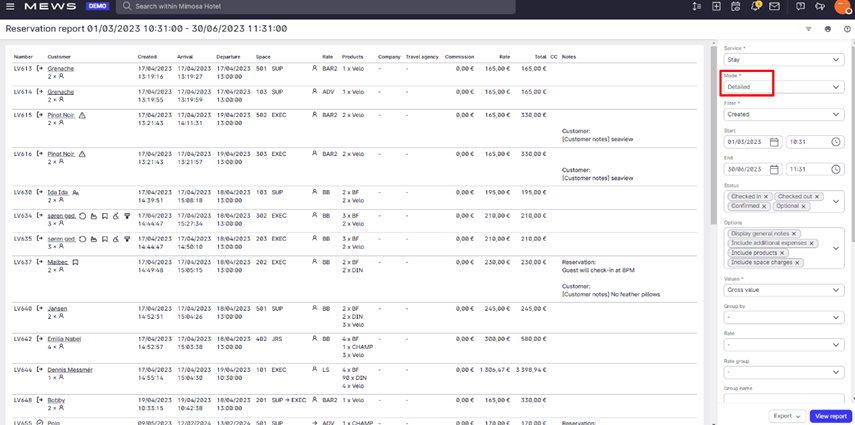
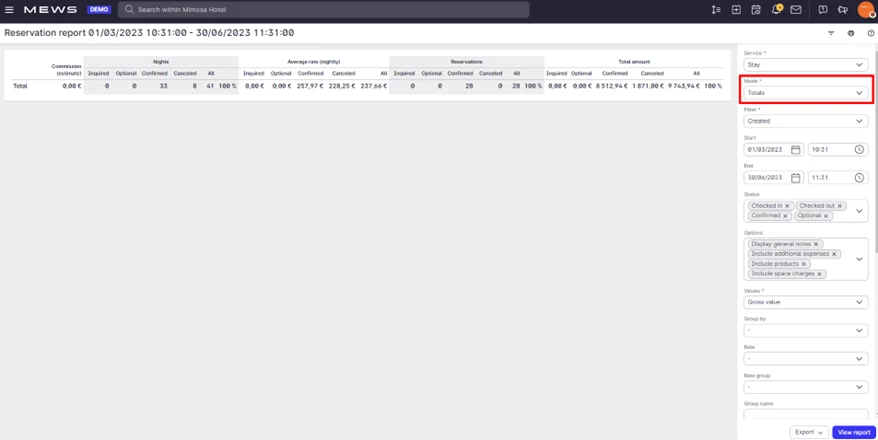
- Filter
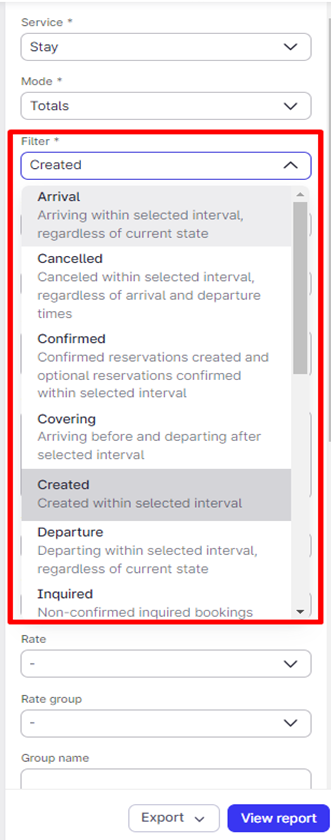
You can find all the options and their meaning in the description or in the help article right here. You can use it to find for a specific timeframe, the reservations created, cancelled, confirmed and many other status.
An important one often overlooked is the Overlapping filter: All reservations arriving, departing, and staying over within the selected interval, sorted by date of arrival.
The filter will automatically select the reservations that have nights within the time frame you added. Perfect for any time period report such as a monthly overview of your property performance.
In Practice: If you set your timeframe to be checking time on 1st of July to check-out time August 1st: It will count all nights for July.
For reservations that started or ended outside of that timeframe, the system will count only the nights within that timeframe, and leave the outsider nights out.
Please note that a reservation is counted if it overlaps (hence the name) even for 2 minutes in that timeframe, so be aware of your starting and ending time.
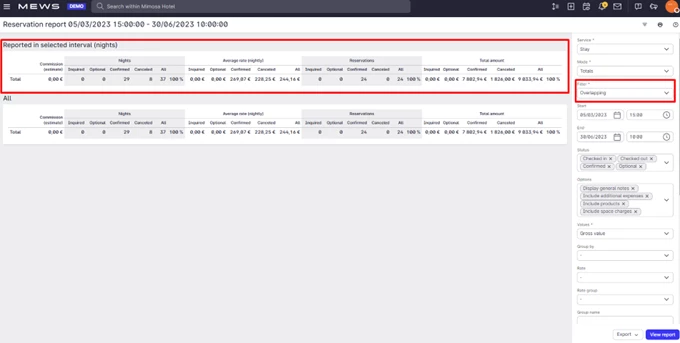
You can see two sections in that report. The first one will show the data for all nights within the interval while the other (All) will show all nights for all reservations within the interval. If the data is different between the two sections, it is because you have reservations that started or ended outside the timeframe.
- Group by
In order to have better reporting it is important to be able to split the information and go deeper into the rabbit hole of numbers and data. This filter here allows you to do that in one click. You can split all your reservations and its data (in Totals mode, but you know that already).
You have multiple options but here are from experience the most used:
Origin: Sort by the source of the booking – such as Email, In Person, Website, Channel Manager…
Rate: View results according to the rate types defined at your property
Segment: View results according to your segments
Space category: View results according to the space categories defined at your property.
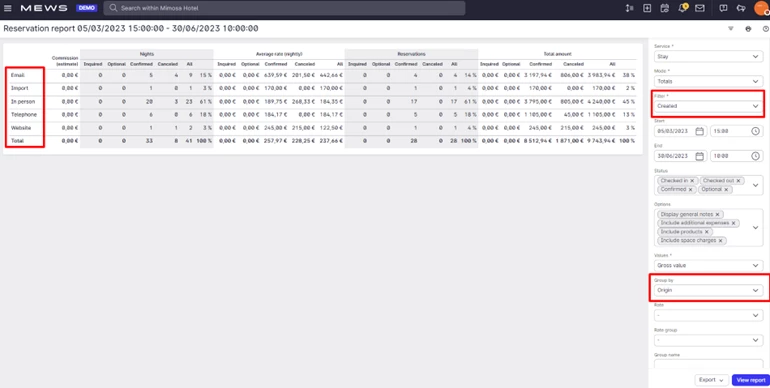
Conclusion:
If you are reading down to here, it must mean that you really enjoy the Reservation Report (me too, don’t worry) 😎. I will then give you a little bonus tip on filters, even though I said three.
All the filters below the Group by filter works the same way: It allows you to Select a particular xxx to see results related to that selection alone.
The fun part of that report is that you can go deeper and deeper on the data you want to find. You can go from Arrivals for today to the number of nights created for the whole year of 2022 grouped by Origin for a specific rate and a specific room type.
This is a very versatile report and it can be denting to approach it but if you are here it means that you are curious about it (or bored) and hopefully this article will provide you with some clarity.
Don’t hesitate to share in the Community your best practice with that report. ⚡




